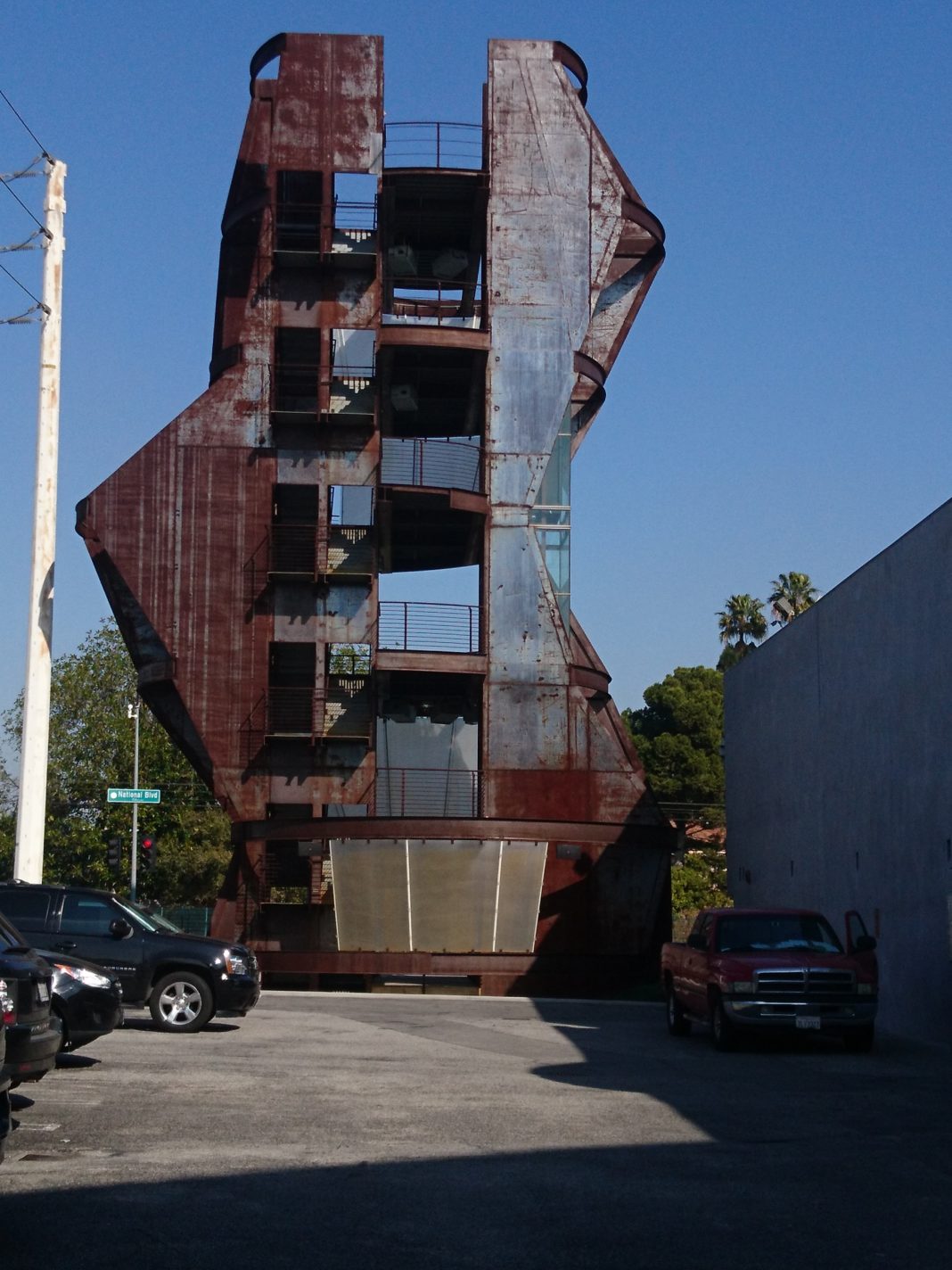LOS ANGELES—It’s always a good day when I can visit lesser known Los Angeles treasures. I spent a few hours ogling remarkable architecture. Why did I not know about the Hayden Tract in Culver City? It’s right there off Jefferson and National! I sniffed it out from a gift, the book – An Architectural Guidebook to Los Angeles.
In order to plot your junket, remember this is in Culver City, not Los Angeles. Set your GPS for 3255 Hayden Street which is mid-block. Parking is a bear, so budget your time accordingly.
From guidebooks you get the impression that the Hayden Tract was some sort of undeveloped grassy field. It surely was back in the day. But some local history is necessary to appreciate the architectural revolution that is taking place here.
Harry Culver dreamed of “a balanced community with an economic base to support its residents.” Main Street provided the economic engine for Culver City (1917).
Back in the 30s the Hayden Tract, (60 +/- acres) was Rancho Rincón de los Bueyes (Rancho Corner of the Oxen) owned by Sam Hayden. Also consider that back in the days that Los Angeles was being developed, the only communities that could claim independence from the city of Los Angeles were those that had their own water source. Harry Culver vigorously campaigned against fierce pressure to annex Culver City to Los Angeles. These Water Wars were serious business. Luckily, Culver City originally got its water from the streams of Rancho Rodeo de las Aguas – Beverly Hills.
By 1949, the Hayden Tract was a subdivision of “modern reinforced concrete buildings,” with adjacent freight car access to the Pacific Electric Railway. It consisted of low-slung mostly 1-story warehouses and offices. That development at the time was the “best and highest” use of the land.
By the early 1990s, the staid commercial tenants of the Hayden Tract had changed. Gone were the clothing, plastic, pen and curtain manufacturers, sheet metal shops and Mattel, Inc. In came chic wholesalers like Freddi’s China Closet and J.J.’s, while La Dijonaise became the rage.
The Hayden Tract is the mecca for Deconstructivism Architecture.
Once you’re on Hayden Street be prepared to keep swiveling your head from building to building, to staircase, and roof line. Even professional photography can’t do it justice. Most of the Hayden Tract design is by Gary Moss, a contemporary of Frank Gehry. Neither felt governed by the physical constraints of the materials they were working with. I imagine a conversation with Moss and his associates going like this, “You can’t do what with metal, concrete, or physics!!! Reply: “Watch me!!”
There are pictures of the Samitaur building online, along with detailed descriptions, but the building and its relationship to the street confines your vista, which I bet was intentional. At first I thought this building could only be celebrated with a drone shot. Then I realized that the undercarriage of the building would not be visible, so that a drone shot would be useless. It looks like the Millennium Falcon to me. Go see for yourself.
I walked all around the Pterodactyl, and I still don’t get it. Maybe this is one you have to see illuminated at night.
And the one building I couldn’t leave without inspecting (It was outside business hours, so it was closed) was the Vespertine. A tall metal and glass building that looks like it was torqued by a giant. It houses the very famous restaurant by the same name. A high-end “reservations a must” serving varying 18-20 course menus ($350+pp). The chef honors his diner’s food preferences, but I’m betting beyond that you have to have “faith” and enjoy the gastronomic experience.
If you’re a tourist or a local, this whole adventure is a “must.”






